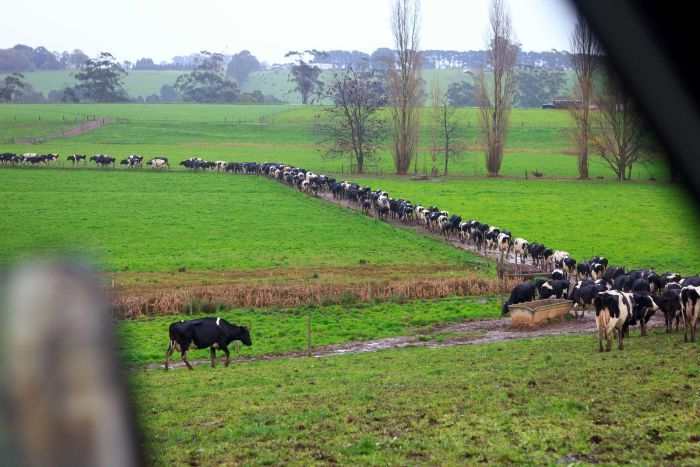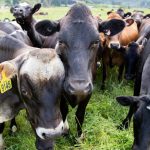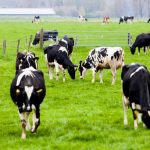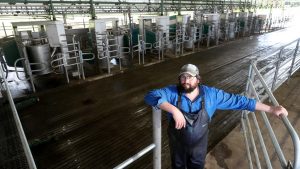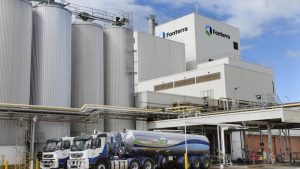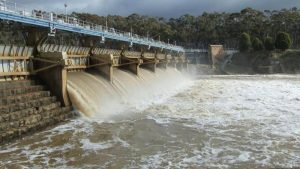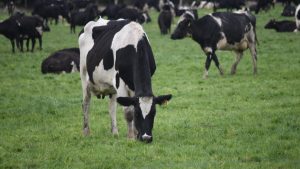
That’s according to the latest Situation and Outlook report released by Dairy Australia today which surveys 800 farmers nationally and provides an insight into global and domestic markets.
The report revealed only 34 per cent of dairy farmers felt positive about the industry in February, this was the lowest recorded since the survey started 15 years ago.
Milk production is also set to drop again, back to 8.1-8.3 billion litres, levels not seen for 25 years.
Outlook altered by weather
Sentiment varied across the country, depending on seasonal conditions, and improved slightly when some farmers were surveyed again in April.
Tasmanian and West Australian dairy farmers are the most positive in the country, with 48 per cent of those surveyed positive compared to the national average of 34 per cent.
In Victoria, Australia’s largest milk production state, western Victorian dairy farmers were the most positive at 39 per cent.
But high costs, concerns about irrigation and feed drove down sentiment in the Goulburn Valley and Riverina, where only 29 per cent were positive.
Profit expectations tell a similar story.
Only 21 per cent of survey respondents in the Goulburn Valley and NSW Riverina expect to make a profit this financial year, compared to 60 per cent which returned a profit in 2017-18.
Up to 79 per cent of Tasmanian dairy farmers expect to make a profit this financial year, the same proportion which made a profit last financial year.
Western Victoria has the highest proportion of dairy farmers expecting a profit this season, at 60 per cent, only slightly down on the 68 per cent which made a profit last financial year.
Farmgate milk prices are the most significant driver of negative sentiment in Queensland and northern NSW, followed by the cost of production.
In South Australia, one-in-10 survey respondents plan to exit the industry, the highest recorded nationally.
Almost half of the NSW dairy industry is in a “‘temporary hold or contracting” business phase and 56 per cent don’t expect to change the number of cows they milk.
Thirty one per cent of these farmers recorded a decrease in production.
Dairy Australia senior industry analyst John Droppert said the results of the national farmer survey were not surprising given the season many farmers hade been through.
He said “widespread dry conditions across Australia, high feed prices and high irrigation water prices” contributed to the poor sentiment.
“If you are in those markets, that drives confidence down, even in a fairly robust milk price environment,” he said.
“The milk price isn’t too bad, but the sort of increases seen in grain and hay, and especially the way hay prices increased so suddenly over the course of the second half of last season — and have stayed so high ever since — that took people by surprise
“It’s really squeezed margins ever since, that’s sort of outweighed what benefit we’ve seen in milk price terms.”
Farmers are not exiting
nlike previous surveys, the negative sentiment hasn’t led to an increase in farmers quitting the industry.
Only six per cent of farmers said they intended to exit the industry and 11 per cent were “winding down”.
Of those quitting the industry, they were more skewed towards farms with herds of less than 300 cows, according to Dairy Australia.
“Correlations between actual exits and confidence is surprisingly low in historical terms,” Mr Droppert said.
“But what we do see, in these periods of low confidence and these real struggles, is people pull-back on investment.
“People go from expansionary phase to a holding pattern.
“Most farmers tend to be optimistic by nature, that’s why they are in such a volatile business.
“But they will pull back and wait to go again and, in many cases, take that view that there will be an opportunity things will come up gain.
“It is only when things get really bad, and for many farmers they have been really bad this season that we see that increase in exits.
“But the vast majority of people will tighten the belt will hold on and will hope to go again.”
Australian milk production is set to finish this season, at the end of June, producing 8.5 billion litres for the year, down 8 per cent on 2017-18.
Dairy Australia has forecast another 3-5 per cent drop for the coming season, bringing annual production to 8.1-8.3 billion litres, mostly a result of a reduction in cow numbers.
